Chimborazo Hospital Historical Marker
Introduction
Text-to-speech Audio
Chimborazo Hospital served as a very important Confederate hospital during the Civil War. Although the hospital no longer stands, a museum stands in its place to commemorate the Confederate hospital and its superior work for its time. While in operation, the hospital was often referred to as, "The Hospital on the Hill." The museum in its stead serves as part of the Richmond National Battlefield Park.
Images
Chimborazo Hospital
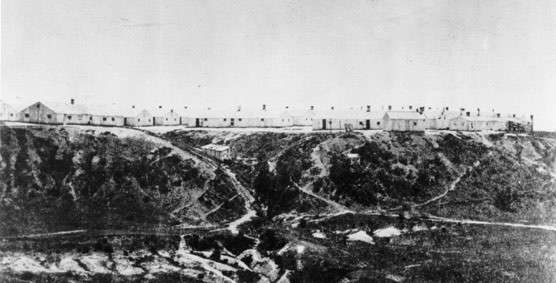
Civil War Medical Museum in Richmond, VA
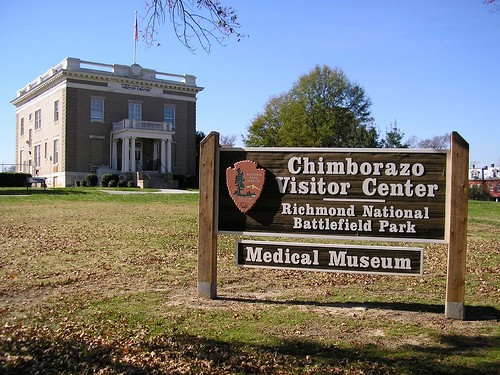
A nurse attending wounded soliders.
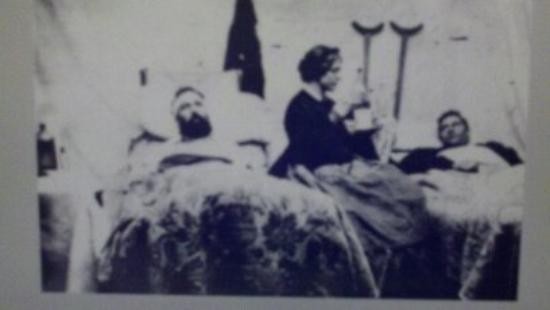
A preserved field amputation kit on display in museum
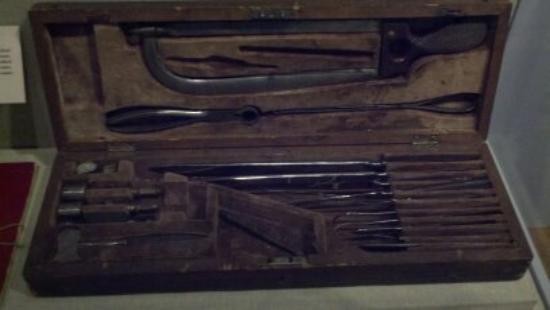
A death certificate written from the Chimborazo Hospital. The solider's name, unit and date of death are clearly legible to the reader
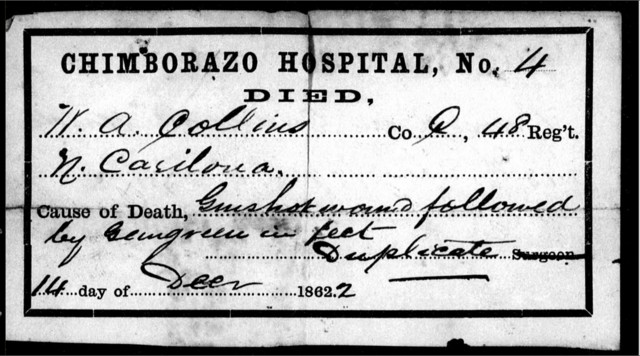
A small scale model of what the hospital would have looked like from 1862-1865
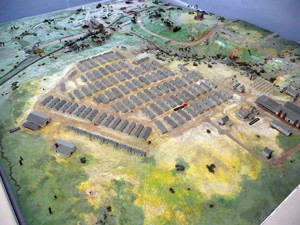
A section of the hospital grounds around the time the Union occupied Richmond in April of 1865
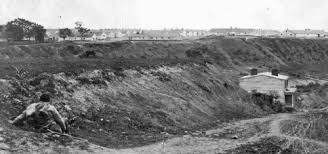
An 1865 map of the hospital

Backstory and Context
Text-to-speech Audio
During the Civil War thousands of men died of injury. It was common for men who made it off the battlefield injured to die later on due to overcrowded and under-equipped medical facilities and a lack of the medical standards that exist today. Confederate Surgeon General Samuel Moore recognized this problem and decided to convert military barracks into a hospital. He put Dr. Jame McCaw in charge of this process and made him surgeon-in-chief.
By the end of he conversion process, the hospital included almost 150 buildings. The facilities included kitchens, bathhouses, an apothecary, a carpenter, and much more aside from the ninety hospital ward buildings. Each ward could hold approximately forty patients. the buildings were built with many windows and doors which allowed for the rooms to be aired regularly.
This hospital was famous in its time for being the best hospital of the Civil War. With mortality rates around nine percent, a lot contributed to its success. One thing that is greatly attributed towards the hospitals success is that it was aired out and kept clean. It was also well staffed and never overly crowded. The Chief Surgeon, Dr. James Brown McCaw, was a graduate of the Medical College of Virginia, now the Virginia Commonwealth University (VCU) Medical Center.
After the war, the hospital was no longer necessary and the buildings were torn down for firewood. There is a medical museum that stands on the ground of the old Confederate hospital that contains artifacts from the hospital as well as a diorama of what the hospital looked like.
By the end of he conversion process, the hospital included almost 150 buildings. The facilities included kitchens, bathhouses, an apothecary, a carpenter, and much more aside from the ninety hospital ward buildings. Each ward could hold approximately forty patients. the buildings were built with many windows and doors which allowed for the rooms to be aired regularly.
This hospital was famous in its time for being the best hospital of the Civil War. With mortality rates around nine percent, a lot contributed to its success. One thing that is greatly attributed towards the hospitals success is that it was aired out and kept clean. It was also well staffed and never overly crowded. The Chief Surgeon, Dr. James Brown McCaw, was a graduate of the Medical College of Virginia, now the Virginia Commonwealth University (VCU) Medical Center.
After the war, the hospital was no longer necessary and the buildings were torn down for firewood. There is a medical museum that stands on the ground of the old Confederate hospital that contains artifacts from the hospital as well as a diorama of what the hospital looked like.
Sources
"Chimborazo Hospital" accessed May 20, 2015, http://www.encyclopediaVirginia.org/Chimborazo_Hospital#start_entry
"Chimborazo Hospital" accessed May 20, 2015, http://www.nps.gov/rich/learn/historyculture/chimborazo.htm
Curnutt RC. 1975. "Hill of Mercy: Chimborazo Military Hospital, 1861-1865". The Journal of the Oklahoma State Medical Association. 68, no. 4: 113-9.
Gildersleeve, John R. "History of Chimborazo General Hospital, Richmond, Va. and its medical officers during 1861-1865." Virginia Medical Monthly, vol. 88, no. 10, pages 573-620.
Green, Carol C., "Chimborazo: The Confederacy's Largest Hospital." University of Tennessee Press, 2004.
Shortt, Katherine Blevins. Chimborazo Hospital: "A House of Charnal Living Sufferers", or Forty Acres of Miraculous Healing. Capstone Seminar Paper—Emory & Henry College, 2006.
Smith, S. "Map of Chimborazo General Hospital, C.S.A., as it appeared July 6, 1862." Virginia medical monthly, v. 88, no. 10 (Oct. 1961).
